Expert Guide to Charging a Leisure Battery
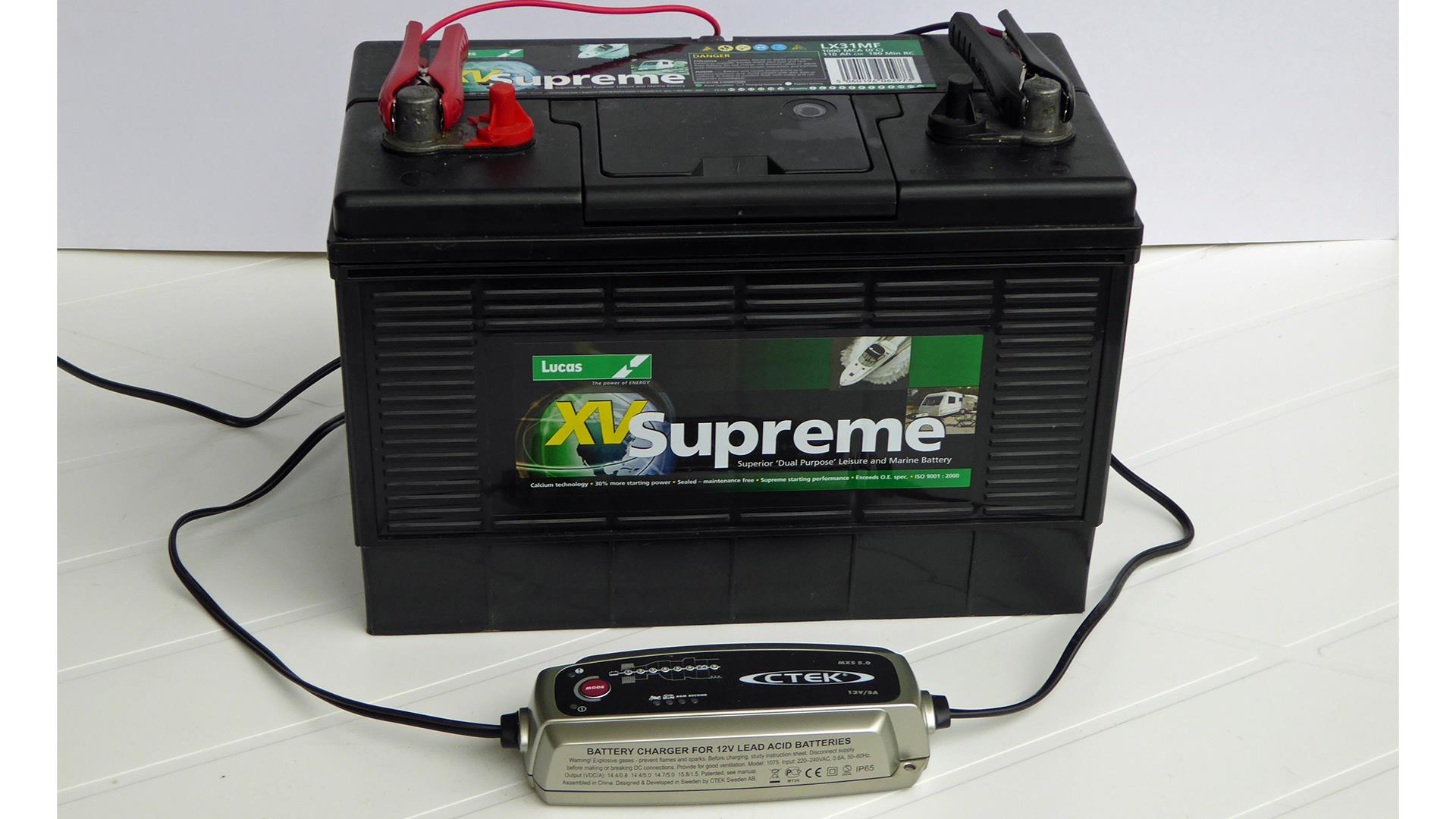
The service life of a leisure battery depends on how frequently it is discharged, how deeply it is discharged and how soon it is recharged. A battery kept in a good state of charge will last much longer than one left standing for weeks or months on end with a low state of charge. This Expert Guide will take you through the options for charging your battery and offer advice and guidance on care.
The chargers generally fitted in caravans and motorhomes are not really battery chargers but power supplies designed to run the 12V equipment on board. As such they are not ideal for fully charging a leisure battery although the so called ‘intelligent chargers’ introduced in the last few years are much better in this respect.
Removing your leisure battery periodically and charging it with a good leisure battery charger will help keep it in tip top condition. The important thing with any rechargeable battery is to know when to recharge it, how fast to do so and for how long.
Most leisure batteries use lead acid technology very similar to that used for car batteries. In time we may see the emergence of lithium-based batteries for this role but they are beyond the scope of this guide.
It is also worth noting that lead acid batteries discharge through internal leakage, even when no load is applied. Some types are more resistant than others to this phenomenon but, as a rule of thumb, batteries in storage and not in circuit should be charged every three months or so.
A lead acid battery will not perform well if it is completely discharged. Indeed to do this is likely to result in irreversible damage in the form of reduced capacity and in the battery’s ability to hold on to a charge. Some types of lead acid battery (notably gel types) stand up better than others to this type of treatment but, as a rule of thumb, 50 per cent should be seen as the maximum level of discharge before recharging. In practice this means when the battery voltage level has fallen to about 12.4V as measured at the terminals with no load applied.
Sulphation
As a lead acid battery discharges lead sulphate forms on the plates. If a long time (i.e. many weeks or months) elapses before recharging the lead sulphate can begin to crystallise. This is bad news as it is difficult to reverse and can lead to a permanent reduction in the capacity of the battery. The effect is known as sulphation. Some battery chargers have modes that can avoid this and may be able to recover minor sulphation damage, see Pulse Charging below for more information.
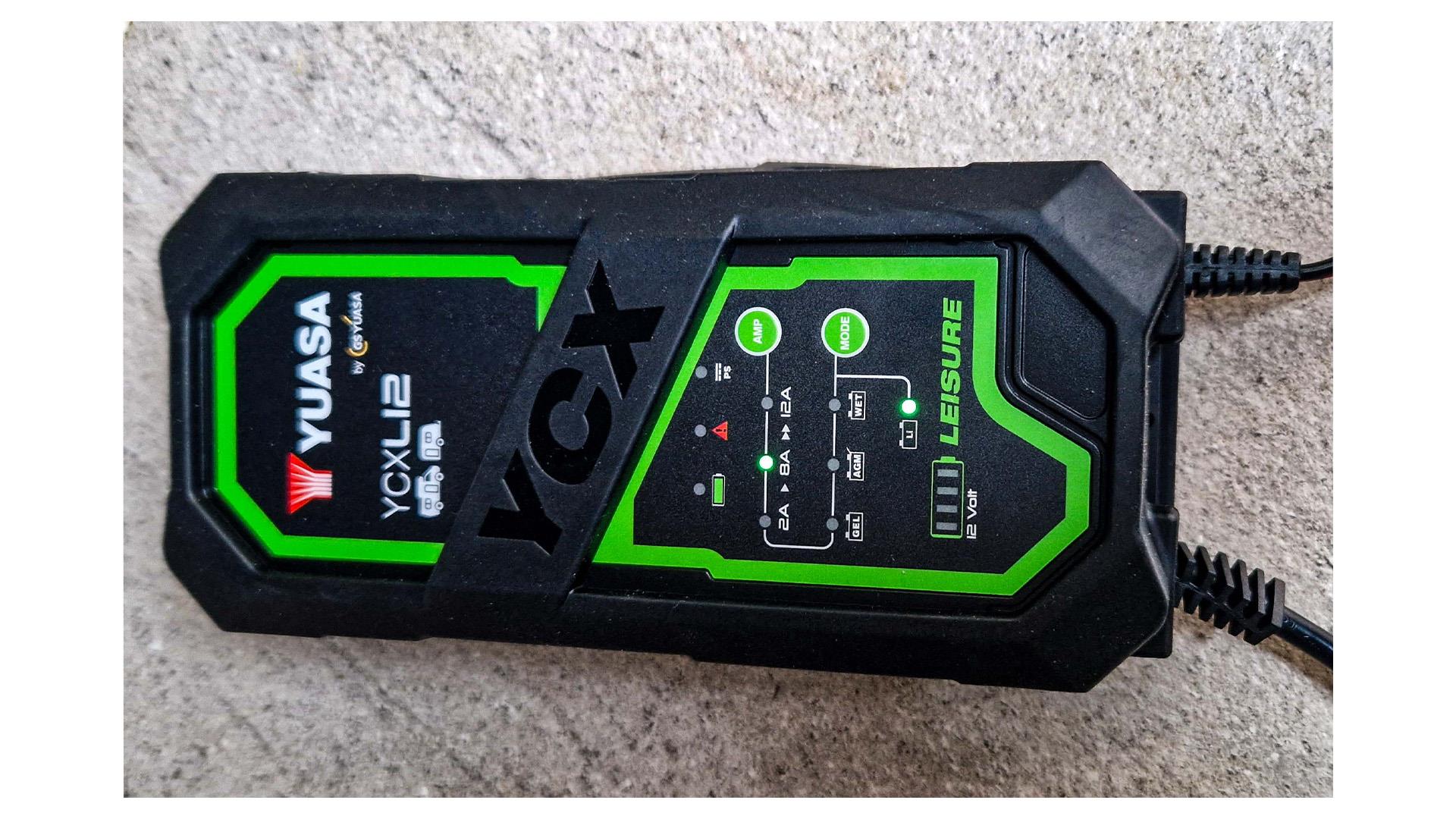
Some chargers can reverse minor damage cause by sulphation inside a lead acid battery
Leisure batteries are designed to provide low currents for long periods of time and then to be recharged relatively slowly. This is the opposite of a car battery which has to provide a very high current to start the car and then is very quickly recharged by the car’s alternator.
The rate at which a leisure battery is charged is therefore important. If time is not an issue, a charger rated at 4 or 5A should prove sufficient. It might take a day, or even two, to charge the battery fully, but generally speaking long slow charges are more beneficial than short fast ones. What is more, if you choose a fully automatic charger (sometimes known as a smart charger), you can leave it connected to the battery permanently without causing any damage.
Before charging a leisure battery it is important to disconnect it completely so as to remove the possibility of something interfering with the charge.
How long you charge a leisure battery for will depend on its level of discharge and the type of battery. You can think of charging a battery as being a bit like getting a sponge to absorb water. If the sponge is just damp it will absorb water very quickly but, as it begins to saturate, the rate will drop off dramatically.
As a completely dry sponge can struggle to absorb water, so a completely flat battery can struggle to absorb charge. If you are unlucky enough to be in this situation you need to be patient and wait an hour or two. Beware that, if you get the battery to recover, it will never regain its former performance.
What happens when the battery becomes fully charged depends on the battery and the charger. If a charging current is still present it can turn the water in the electrolyte into hydrogen and oxygen. It is a process known as gassing and explains why naked flames are a bad idea near charging batteries.
Gel and Absorbed Glass Mat (AGM) batteries are able recombine these gases back into water, provided the charge rate is low enough. If it is not, the gases escape through specially-designed valves. That is why these batteries are known as valve regulated lead acid (VRLA).
CO alarms and battery gassing
Carbon monoxide (CO) alarms are now installed in many new caravans and motorhomes to detect poisonous CO gas. The sensors in such alarms are also sensitive to hydrogen so an apparent false alarm from a CO alarm – for example the alarm sounding when no gas appliances or other potential sources of CO are around – could indicate a problem with your battery.
Types of Battery Charger
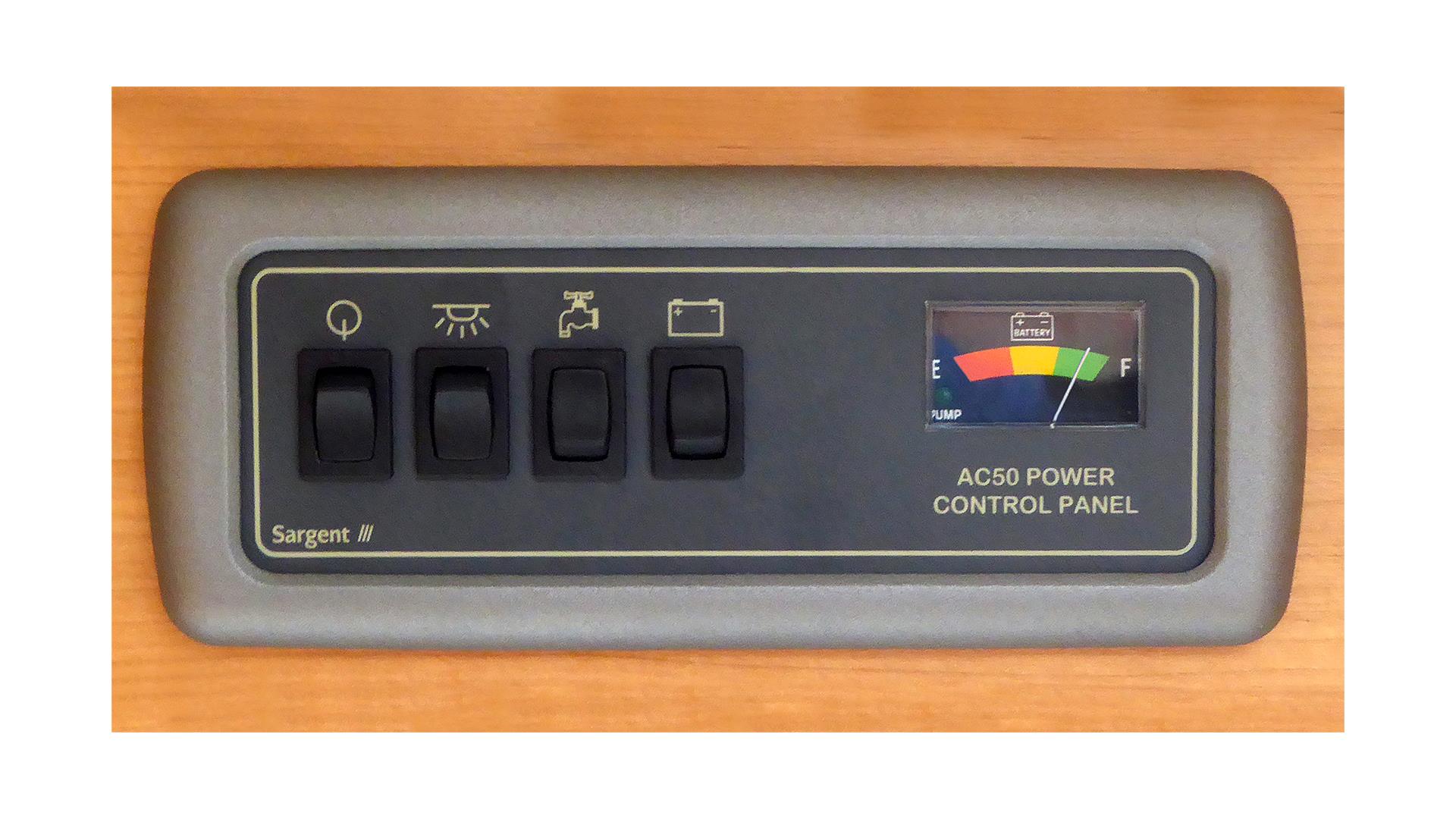 The chargers fitted to older caravans and motorhomes only produce an 80 per cent charge in the leisure battery
The chargers fitted to older caravans and motorhomes only produce an 80 per cent charge in the leisure battery
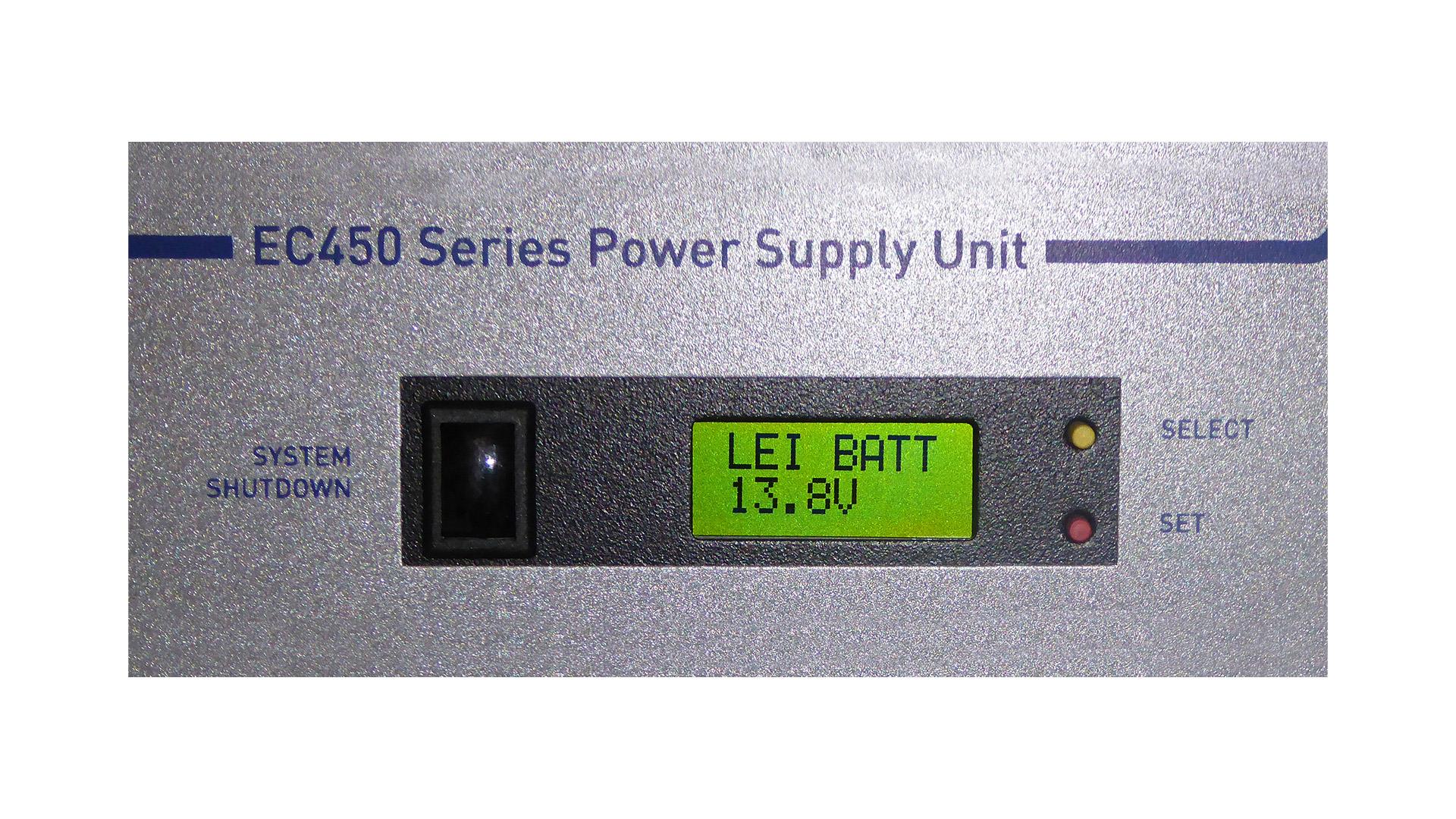 Intelligent chargers such as this one can achieve a 90 per cent charge although without on board kit in use the voltage drops back to 13.8V, as shown here. In time the battery will decay to an 80 per cent charge level
Intelligent chargers such as this one can achieve a 90 per cent charge although without on board kit in use the voltage drops back to 13.8V, as shown here. In time the battery will decay to an 80 per cent charge levelA battery charger is effectively a device that can output direct current at a voltage sufficient to overcome that of the battery such that current flows into the battery rather than out of it. Pushing current into the battery has the effect of reversing the chemical changes that take place as it discharges.
Inbuilt
As mentioned in the introduction the battery chargers fitted to many caravans and motorhomes are really more like power supplies than true chargers. To avoid gassing over long periods the output voltage is set to 13.8V. This is enough to give the battery a charge of about 80 per cent. The idea is that the remaining charge can take place during the relatively short time spent travelling.
Since about 2010 these chargers have been equipped with a so called ‘intelligent’ function, which switches the output voltage from 13.8V to 14.4V whenever a set current is exceeded. A common trigger is switching on a water pump. This type of charger can achieve a 90 per cent level or more in the battery but only when the caravan or motorhome is in use.
Inbuilt chargers generally have an output in the range 10 to 20A, depending on the rating of the equipment they have to power.
Tip
If left in storage for months, albeit with the charger on, the leisure battery will eventually reduce to a charge level of about 80 per cent. That is why it is important to remove the battery periodically during long lay ups and to charge it with a good charger suitable for leisure batteries.
Basic chargers
The simplest chargers provide an unregulated voltage that may rise as high as 15V or more as the battery becomes charged. This is too high for low maintenance and VRLA type batteries and may result in damage. Such chargers are only suitable for use under supervision. Many years ago these were the main type of charger available but advances in electronics mean that most chargers are now semi or fully automatic.
Semi-automatic chargers
These chargers are designed to cut out once a certain battery terminal voltage has been reached. This voltage is about 14.4V for a low maintenance battery and 15.2V for a standard battery. The voltages are chosen to enable a full charge without significant gassing. Normally there is a selector switch so you can set the charger according to the type of battery.
Smart, fully automatic chargers
Arguably the best chargers are the multi-stage automatic ones that may be left permanently connected without damage. The first stage is typically the constant current phase where a constant current is delivered into the battery until the terminal voltage reaches something in the region of 14.4V.
The next stage is known as the constant voltage phase, where the terminal voltage is held at the same level while the current drops. This is normally held until the current being drawn from the charger equates to a figure of .05c or less where c = the Ah capacity of the battery.
The best fully automatic chargers will also monitor the temperature of the battery and modify the charging regime accordingly, providing less energy when cold and more when warm, within defined limits. This system also provides overheat protection.
When this figure is reached the charger then moves to the float mode where the battery is held at a constant voltage of about 13.6V. This helps preserve the state of charge of the battery.
Three-stage chargers stop there but a four- or more stage one will move on to a maintaining mode after a period that may be many days. Here the voltage is allowed to drop and the battery is pulsed when a set level is reached. Short pulses help stop self discharge and also stratification – a process whereby the electrolyte becomes denser at the bottom and less dense at the top.
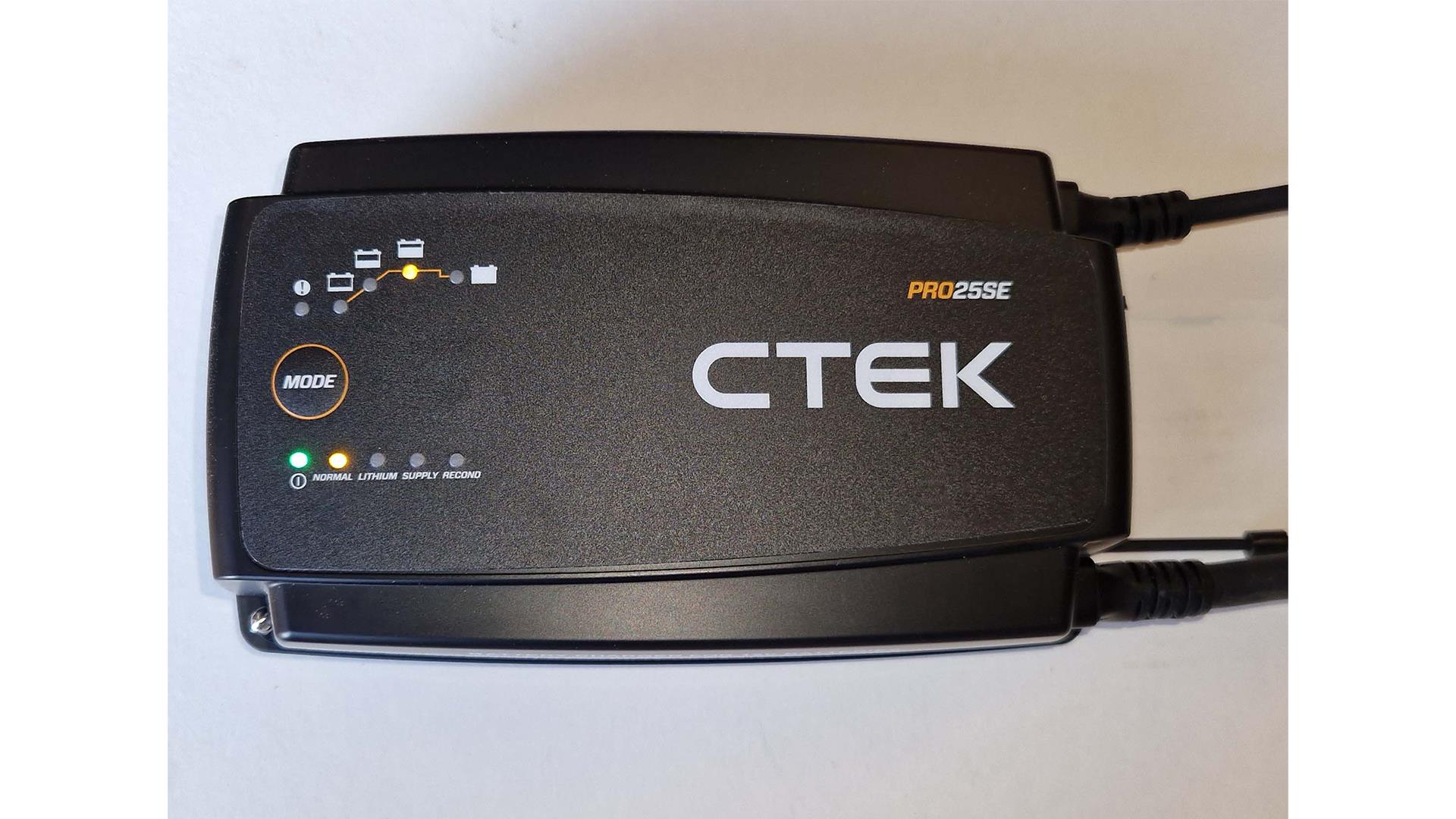
More sophisticated chargers such as those from CTEK may add other stages such as de-sulphation, soft-start and reconditioning. The one above can also charge different battery chemistry types such as lithium.
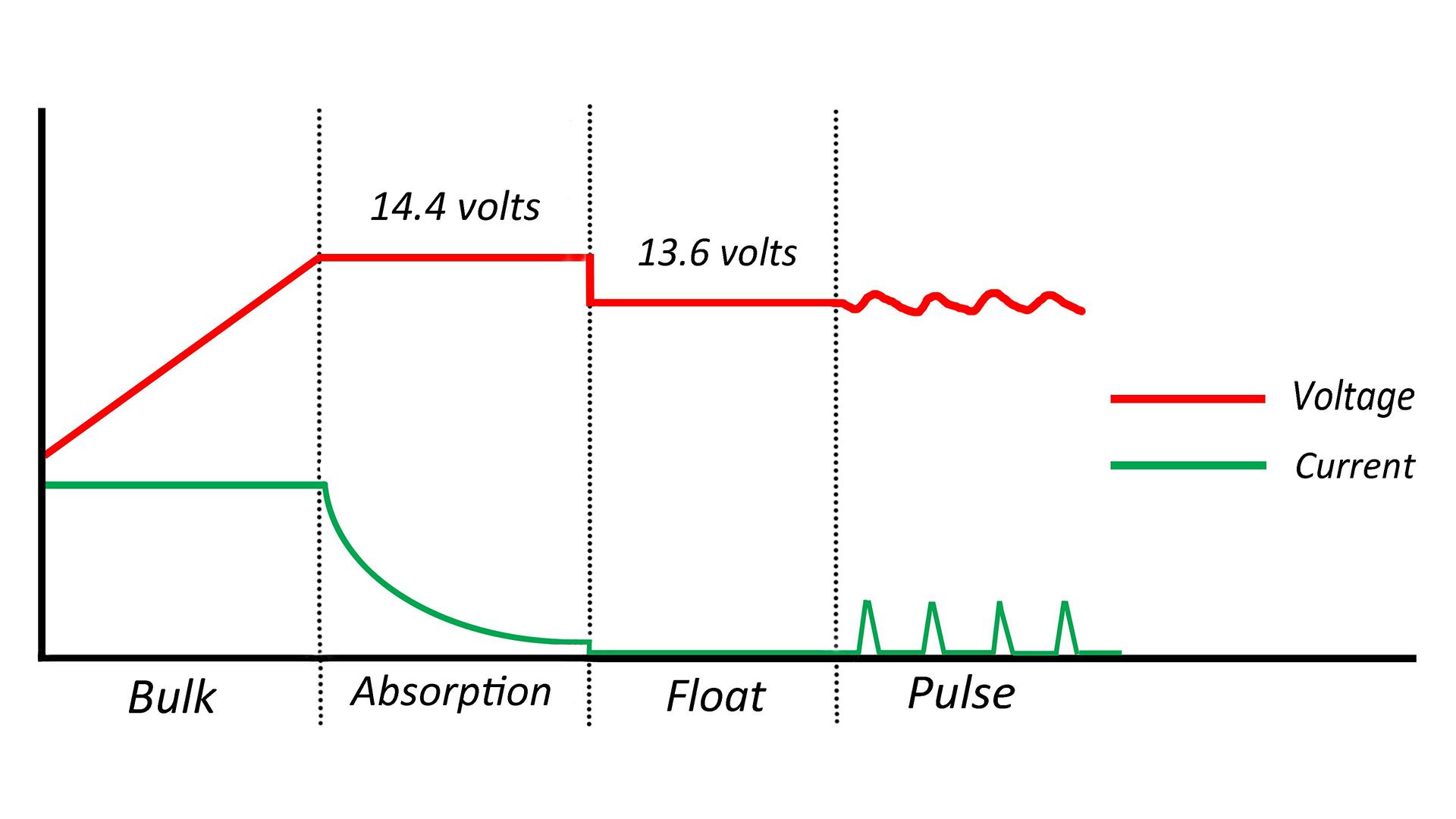
Typical voltage and current curves for a multistage charger
Pulse Charging
Pulse charging uses high-frequency direct-current pulses as opposed to the steady direct current supplied by conventional chargers. The shape and amplitude of the pulses are carefully controlled such that high voltages can be applied without overheating the battery. In a lead acid battery these pulses are said to be able to break down any lead sulphate crystals and so extend battery life. While it is possible to find chargers working solely on the pulse principle, the pulse charging of lead acid batteries is often found as a stage of a multistage charger that will trip in if a sulphated battery is detected. It should not be confused with the pulsed maintaining stage of a multistage charger. This uses much lower frequencies and voltages.
Off grid charging options
There are various ways you can charge a battery when you do not have access to mains power. These include portable generators, car alternators, solar power and wind power.
Portable generators
Most portable generators have a 12V DC output for battery charging. They can be a quick way of getting some power into a battery when off grid, but the normal lack of instrumentation means you do not easily know what the rate of charge or battery voltage really is.

Portable generators are fine for short periods of charging but you may annoy your neighbours if you run them for any length of time due to the noise
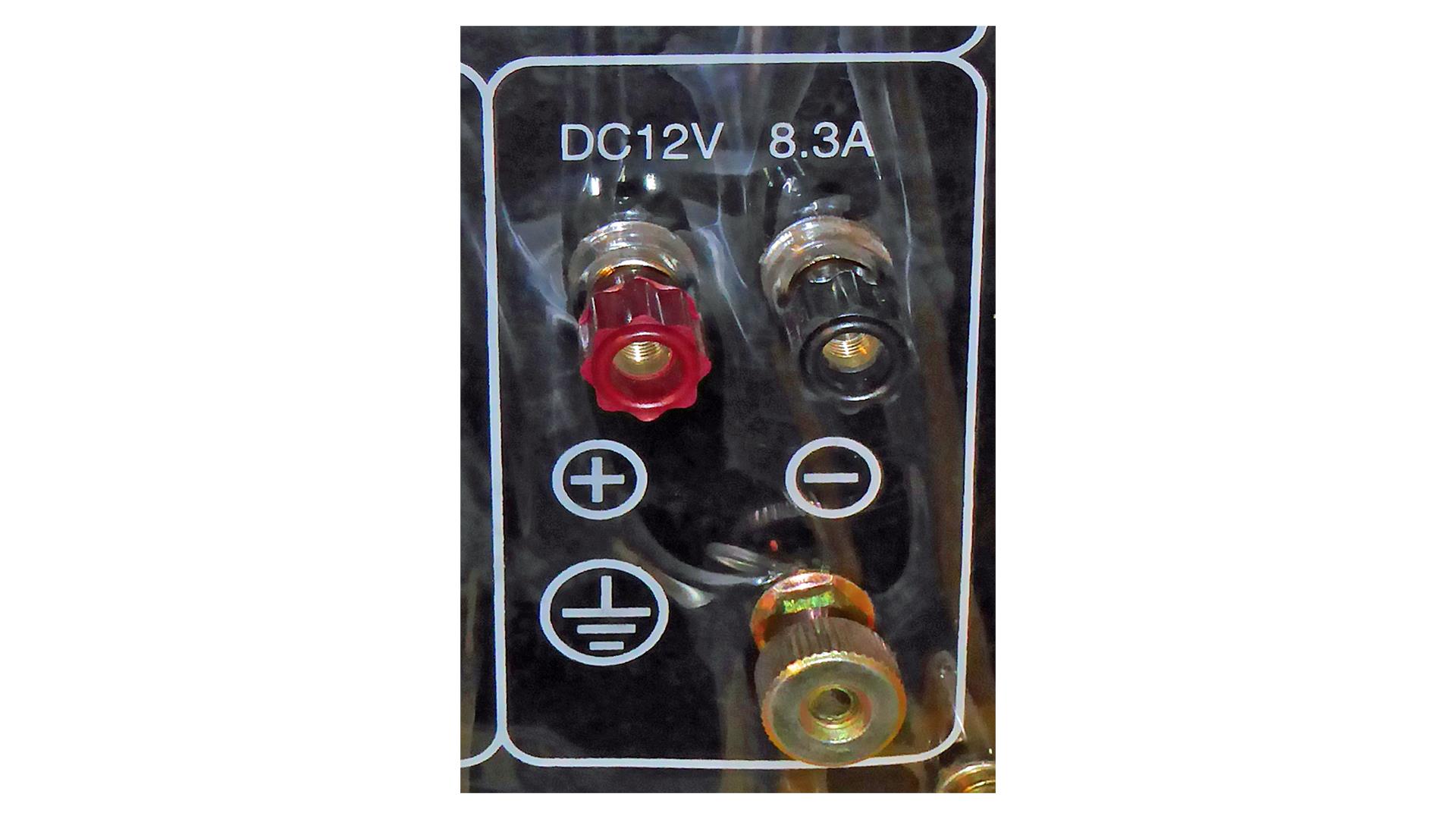
A generator output suitable for battery charging
Of course you can plug your caravan or motorhome into the 230V socket on the generator and charge the battery using the on-board power supply. However care is needed to ensure the generator has stabilised and is producing a steady output. A small load such as a 60W incandescent light bulb can help here. Failure to observe this may result in damage to the vehicle’s battery charger.
Using your car's alternator
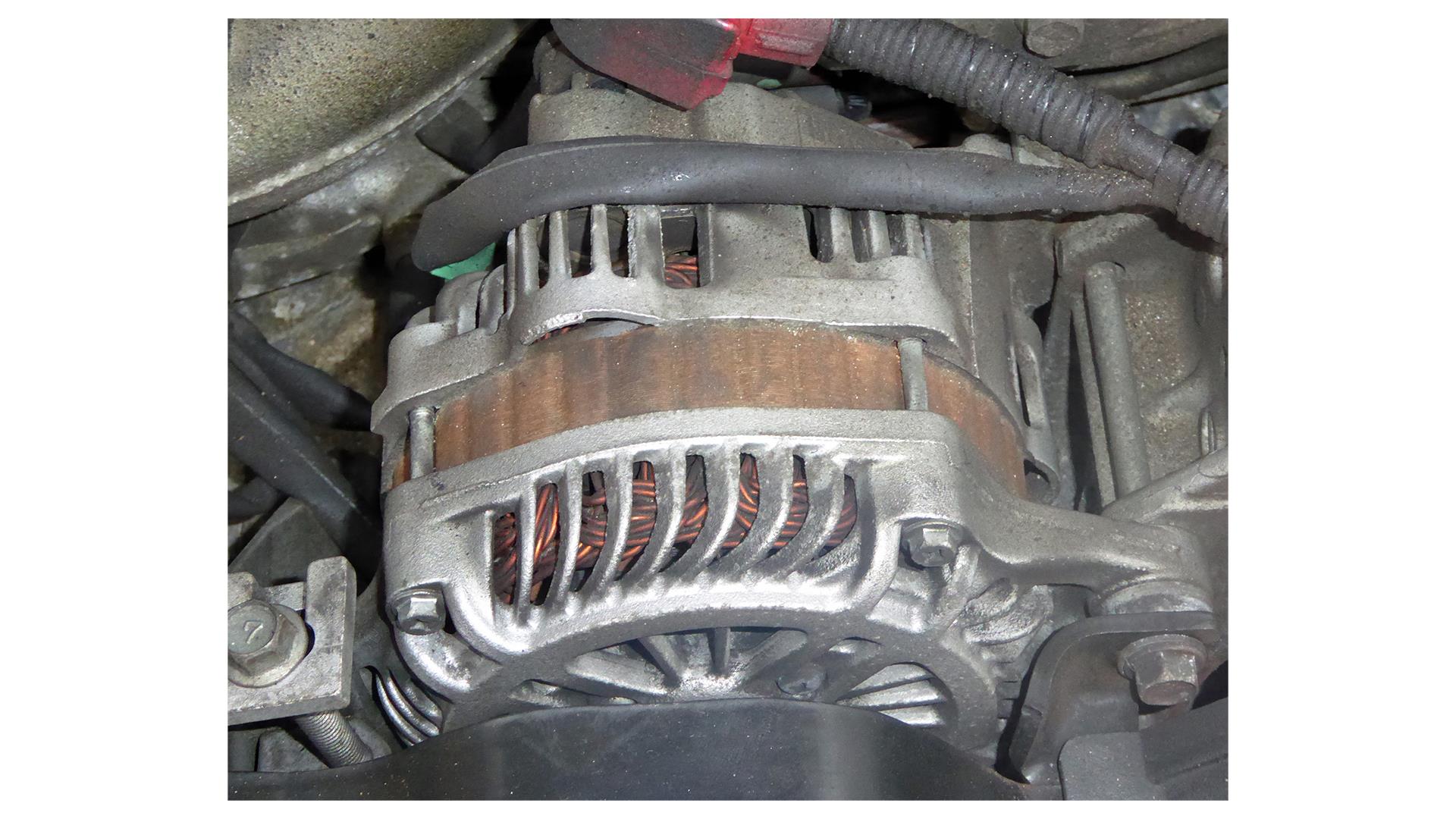
One advantage of a motorhome is that you can charge the leisure battery by starting the engine and going for a drive, though this will only top-up the battery as the vehicle wiring only has a limited capacity. It is not quite so easy for caravanners, but you can have a second battery and charge it in the boot of your car as you drive around. To do this you will need to arrange for the battery to connect to the car via a relay which only operates when the engine is running and the alternator is producing power. An auto electrician should be able to help with this. If this route is chosen secure the battery to prevent spillage and under no circumstances should a battery be plugged directly into any of the car’s 12V sockets.
Another vehicle option is a battery to battery charger that will manage and redistribute the excessive charge going to the starter battery to the leisure batteries, they are often smart so can deal with different battery ages and maybe types of batteries. Speak to a battery and charging specialist to get the right combination to suit your needs.
Solar Powered Chargers
A solar panel can be an excellent source of power when off grid but it is not wise to connect the raw output of all but the smallest panels direct to a battery as overcharging could result. A solar panel designed for use with 12V batteries will be capable of producing voltages up to about 23V. When initially connected, this voltage will be dragged down by the load imposed by the battery but, as the battery charges, a point will be reached where the voltage becomes too high, resulting in damage to the battery. To prevent this, the output of the panel should be fed through a regulator, sometimes known as a charge controller.
There are three types of regulator, each with its own level of efficiency. The most basic of these simply switch off when a set battery voltage is reached. Reconnection takes place when a second, lower, voltage is reached. The problem with this on or off arrangement is that the battery will not be fully charged when disconnection occurs as the unrestricted current running in from the panel may raise the battery voltage to an artificially high level. Also by the time the battery voltage has decayed to the lower set level the battery will have discharged somewhat. The bottom line is that the average charge level of the battery is unlikely to exceed about 85 per cent.
The next level of solar regulators is that using pulse width modulation (PWM) technology.
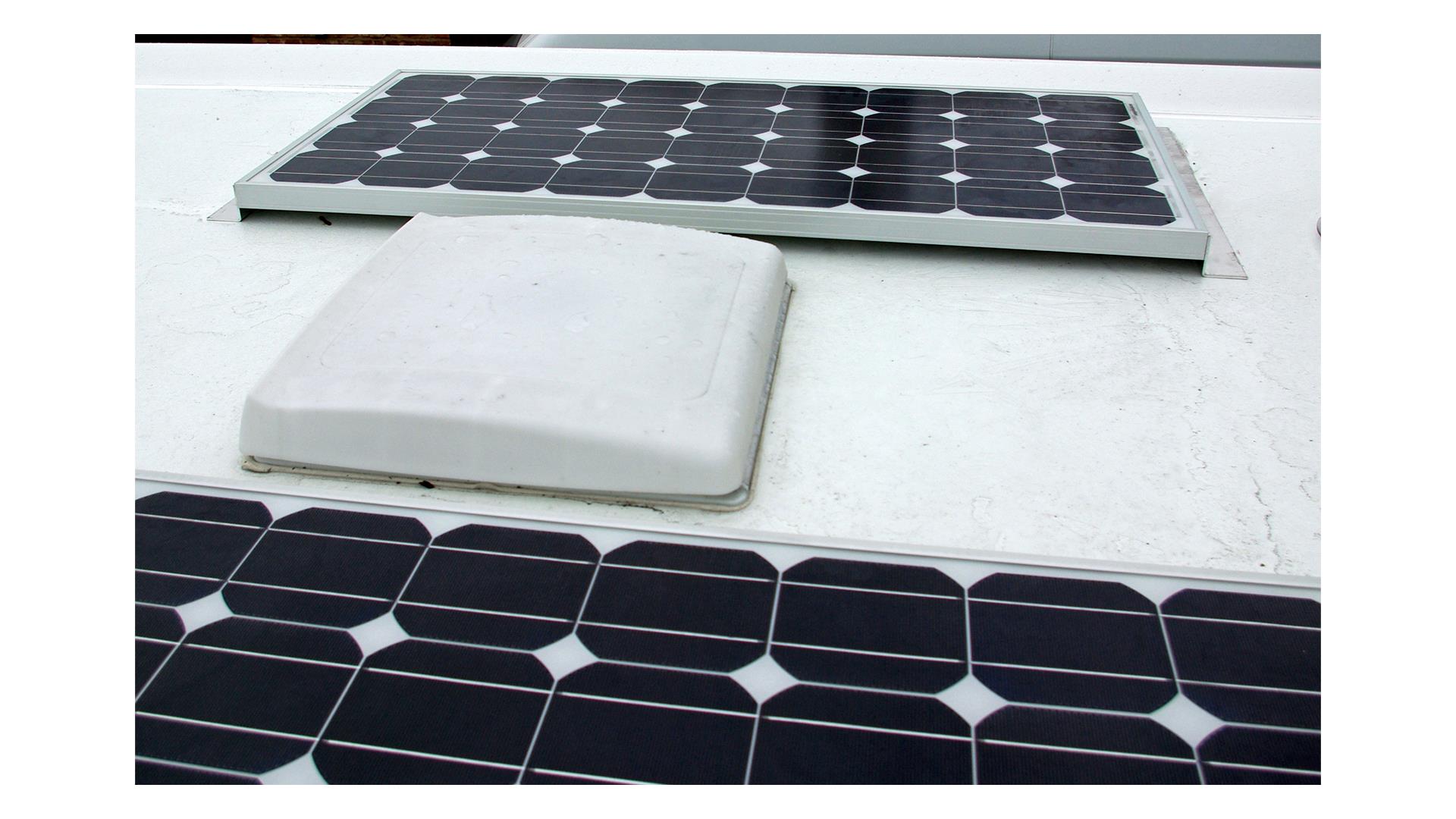
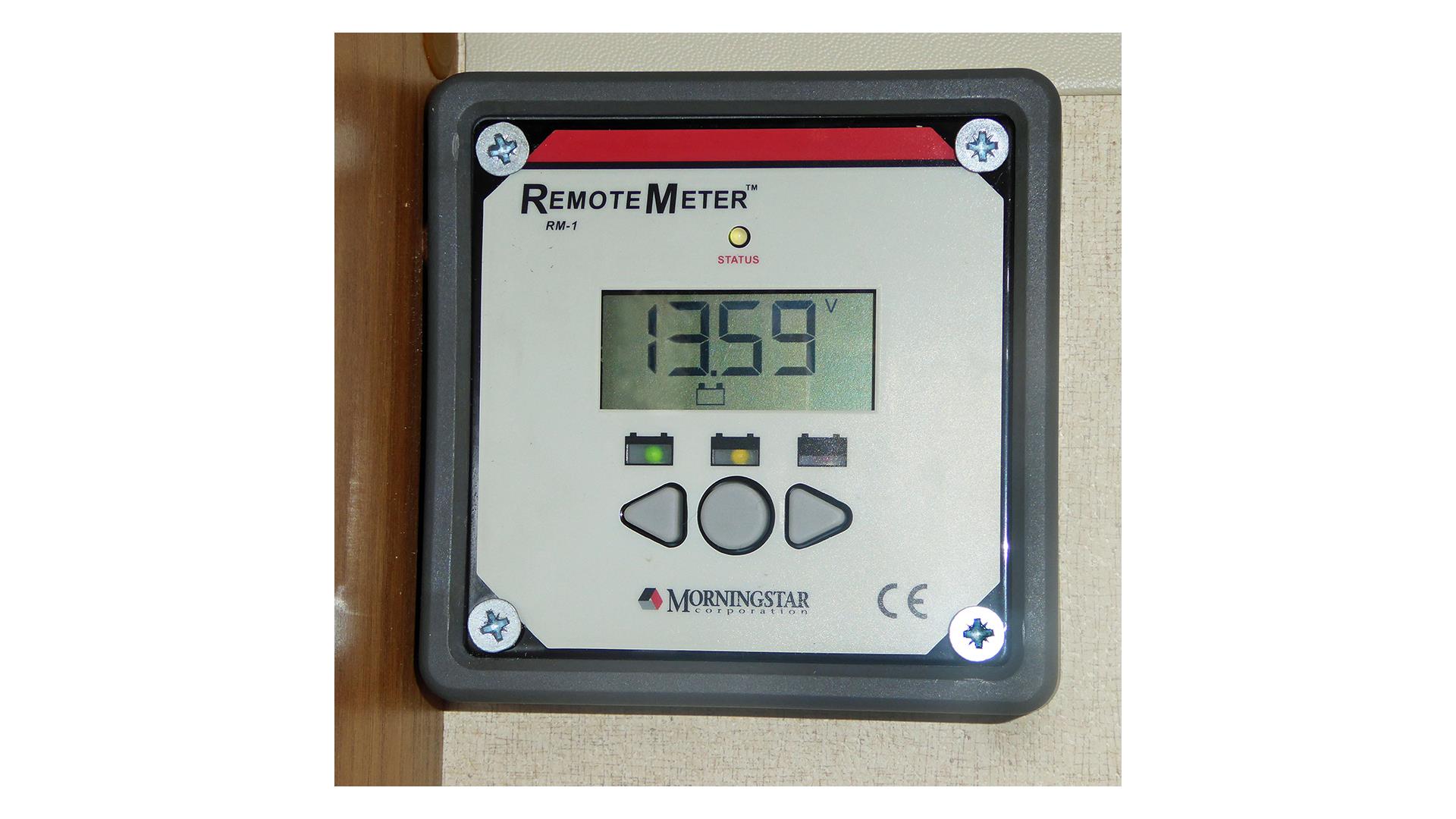
This solar display panel can show voltage, current, amp hours and other information on its screen. It works in conjunction with the charge controller shown here
The amplitude, length and frequency of the current pulses are varied according to the level of charge in the battery. One that is low in charge will receive frequent, long pulses but as the charge level increases the pulses become shorter and less frequent. This latter phase acts as a trickle charge keeping the battery topped up during periods of excess solar energy.
Benefits of PWM solar chargers over simpler types include higher efficiency and more rapid recharging, together with improved battery performance and life.
The most advanced form of solar charge controllers use a technology called maximum power point tracking (MPPT). These devices use complex algorithms to allow solar panels to operate at their maximum power for a given set of temperature and light conditions.
This involves transforming power at the voltage best for the panel into power at the voltage best for the battery. In this way they use power that would otherwise be lost. An MPPT based charger can achieve average charge levels of 90 to 95 per cent in the battery. MPPTs are particularly effective in winter and on cloudy days when extra power may be needed the most.
Wind Power
The big advantage of wind power is that it can be available all the year round, both day and night. There is often also more of it in the winter, just when we need it. The downside is that wind is not a reliable source of energy and the equipment needed to harvest a worthwhile amount can be cumbersome to carry around. These make them more suited if you camp near the coast or on high ground.
Just as with solar power some form of regulator is needed to prevent battery damage. Again, simple, PWM and MPPT types are available, with some able to handle solar and wind inputs simultaneously.
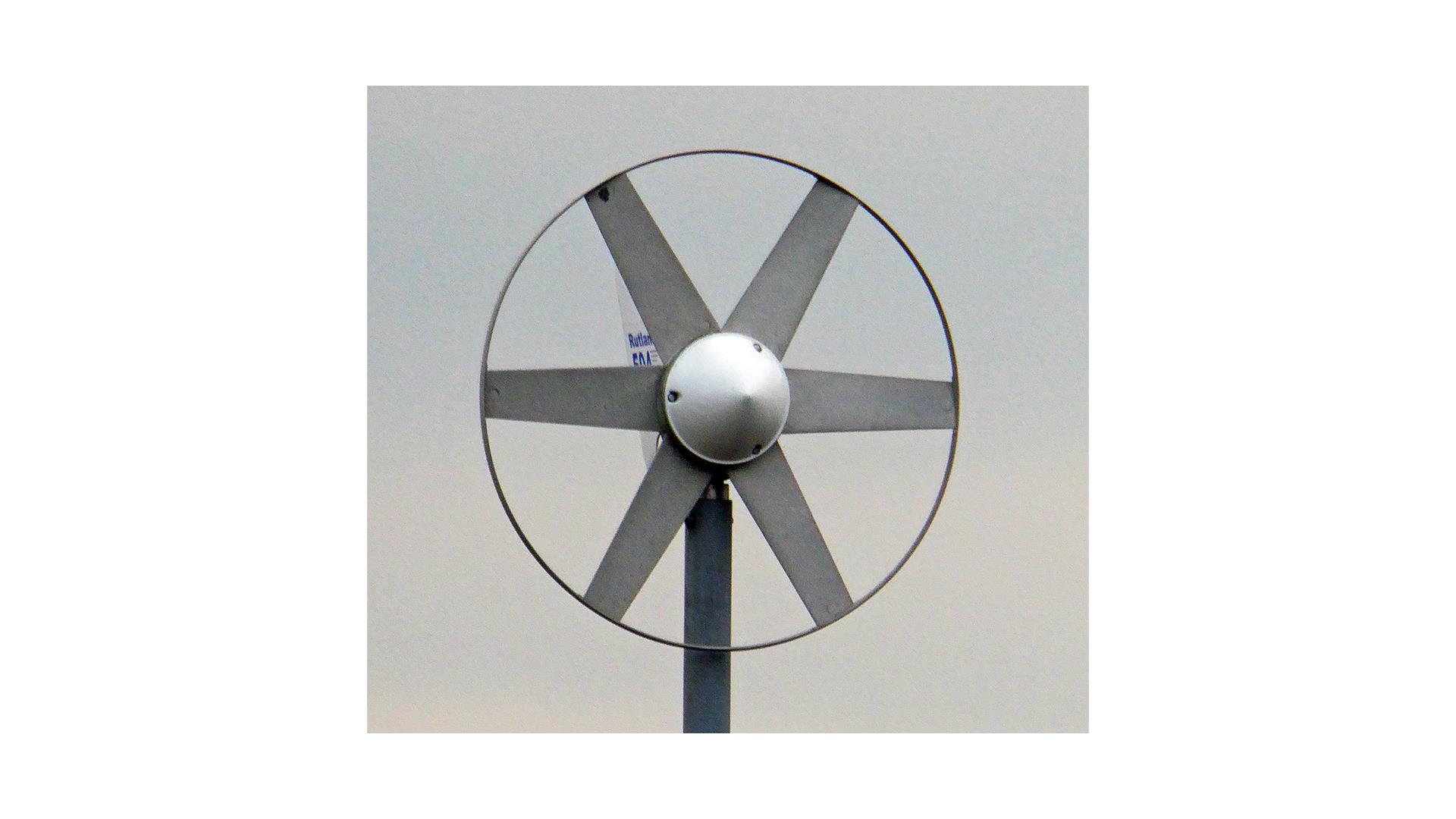
Small multi-bladed wind turbines like this Rutland 504 are quiet and efficient at low wind speeds but are perhaps best suited to keeping batteries topped up rather than powering equipment
The requirements for the simple regulators are however somewhat different. Switching off the power when a set voltage is reached is not an option as removing the load from a wind generator can cause it to rotate at dangerously high speeds. Instead it is normal practice to switch the excess electricity into some form of load such as a resistor. As a bonus this may be used to heat water.
Checking a battery charge level
There are two principal ways of checking the state of charge of a lead acid battery. The first is to measure the voltage at the terminals with the battery disconnected. If you do not want to disconnect it you can try switching off all 12V appliances (do not forget the TV booster) but the chances are that something will be drawing a small amount of current that will tend to depress the reading slightly.
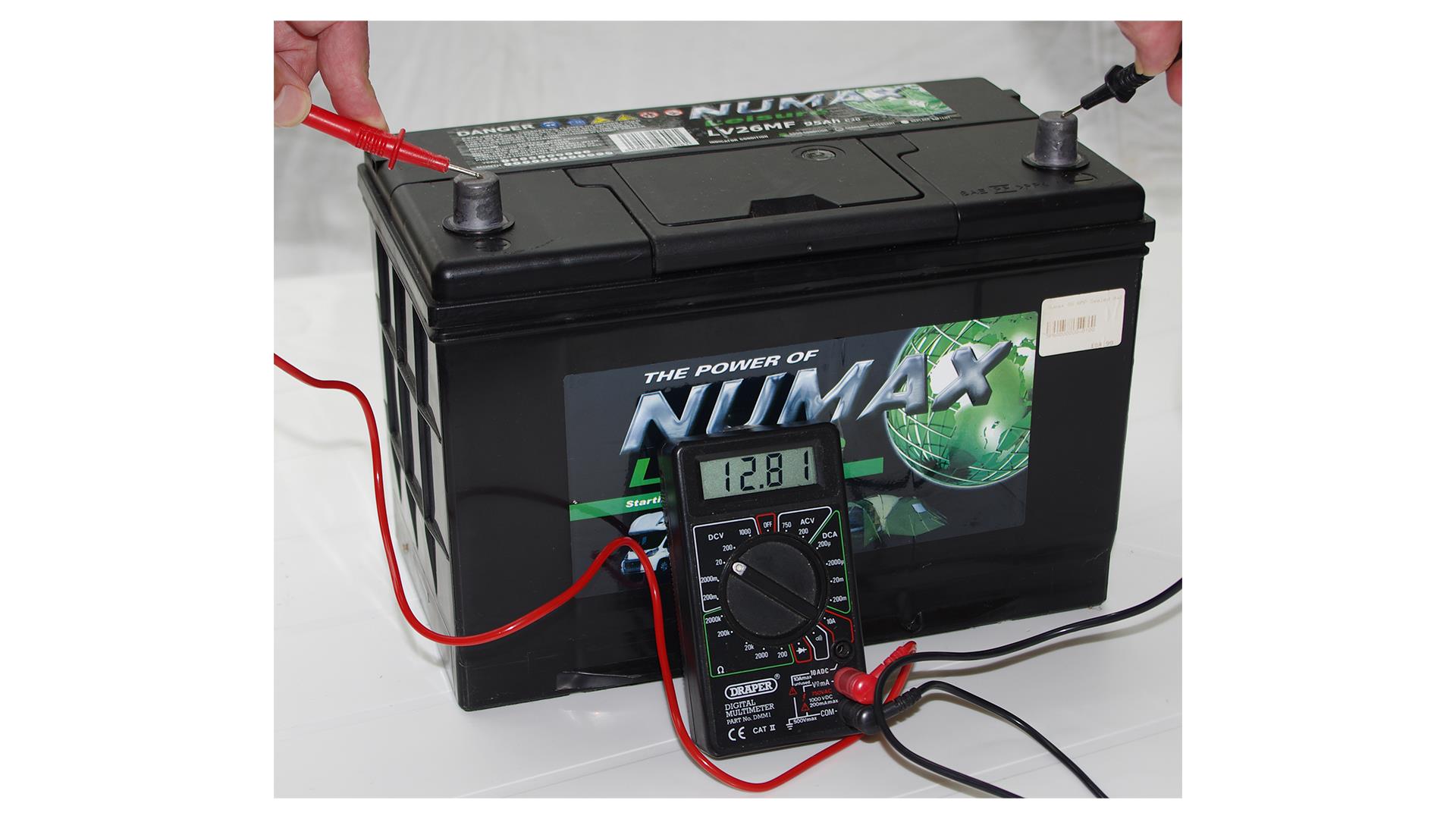
After a day resting this battery is registering 12.81v, which means it is fully charged

The second way is to measure the specific gravity of the battery acid. This is only possible for unsealed batteries and so rules out maintenance free, AGM and gel batteries. The specific gravity may be checked with a simple hydrometer, available from many car accessory shops.
The specific gravity of the acid is generally a better guide to the state of charge of the battery and, of course, you do not have to disconnect it to take a reading. By checking each cell in turn it is also possible to see if any cell has a problem, evidenced by having a lower reading than the others. Hydrometer readings should not vary more than 0.05 between cells.
A fully charged battery should have a specific gravity of about 1.27. A discharged battery should have a specific gravity of 1.1 or less.

Useful tips
- Check the state of charge of your leisure battery at least once a month
- Recharge batteries as soon as possible after use
- Remove the battery for charging with a leisure charger every six weeks or so
- Always use distilled or de-ionised water for topping up – never use tap water as it may contain minerals to contaminate the electrolyte
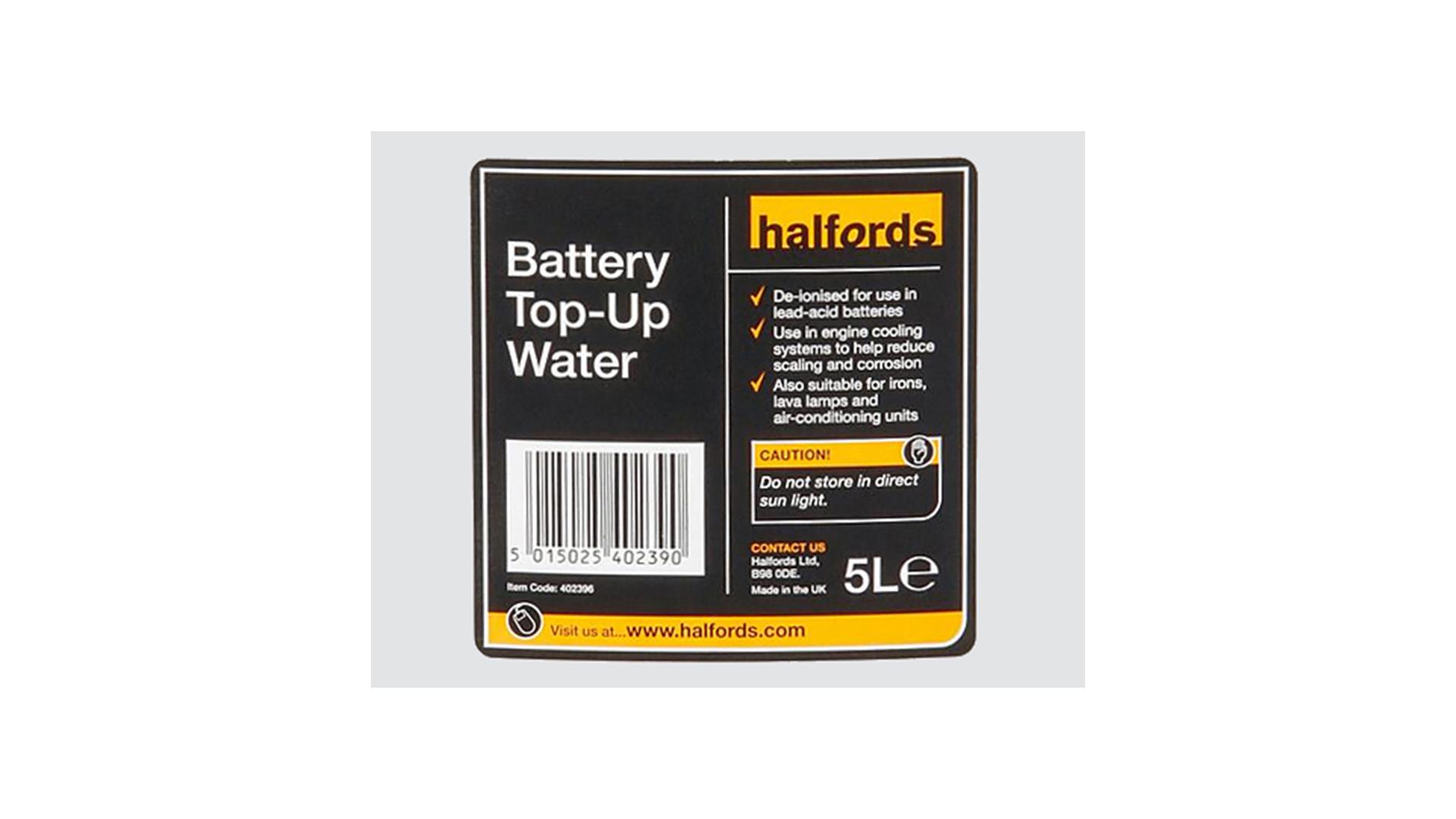
- Do not forget that a deeply discharged battery can freeze
- Always ensure any charger is suitable for the type of leisure battery you have i.e. standard, low maintenance, gel or AGM. Lithium batteries will be permanently damaged if topped up by a charger with a recondition or desulphate mode
- Read our Expert Guide on Batteries and their care
Glossary
AGM
Absorbed Glass Mat. A type of battery where the electrolyte is contained in a glass mat sandwiched tightly between the plates.
Ah
Ampere hours. A unit of measurement based on current in amps (A) multiplied by time in hours (h). It can be used to compare the capacity of one battery with another.
Boiling dry
A condition where the water content of the battery’s electrolyte is lost through gassing such that the plates of the battery become exposed to the air. This typically occurs if a battery is over charged.
Cycle life
The total number of charge/discharge cycles a battery can sustain before it needs to be replaced.
Deep cycle
A battery designed to be discharged to 50 per cent of its capacity or less before being recharged.
Electrolyte
A liquid or gel which contains ions and can be decomposed by electrolysis, e.g. that present in a battery.
Float charging
A type of charging where a battery is connected to a constant voltage supply that maintains it in a fully charged condition.
Gassing
The evolution of gas from one or both of the electrodes in a battery. Gassing results from the electrolysis of water in the electrolyte during charging.
Gel battery
A type of VRLA battery where the electrolyte consists of a gel, making it resistant to spillage and conferring some other advantages.
MPPT
Maximum Power Point Tracking. A technology used in some solar panel regulators to maximise the power transfer from a solar panel to its load, such as a battery under charge.
PWM
Pulse Width Modulation. A technology whereby current is switched on and off in a series of rapid pulses of varying lengths. It is used in some solar panel regulators as a means to achieve constant voltage battery charging.
Self discharge
A process by which a battery slowly discharges even with no load applied to it. It is caused by chemical changes within the battery.
Trickle charging
A type of charging where a fully-charged battery is subjected to a small constant current equal to the battery’s rate of self discharge, thus enabling the battery to remain at its fully charged level.
VRLA
Valve Regulated Lead Acid battery. A low maintenance battery where any charging gases should recombine into water but can be safely vented if they do not.
